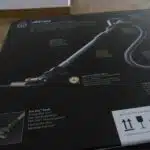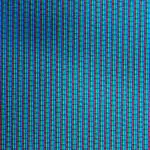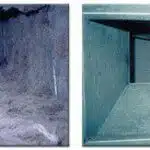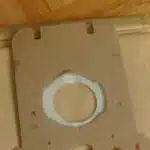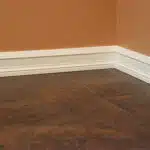In today’s fast-paced world, keeping a clean and dust-free home has become an essential part of our lives. Dust can accumulate in every corner of your house, making it difficult to maintain a hygienic environment. For those who suffer from allergies or respiratory problems, getting rid of dust is even more critical. As a professional house cleaner/housekeeper with years of experience, I have seen firsthand the importance of eliminating dust from every nook and cranny in a home.
Dust is not just unsightly; it can also pose health risks for you and your family. It contains various allergens and irritants that can trigger allergies and asthma attacks. Therefore, it is crucial to know how to get rid of dust completely from your home. In this article, we will discuss some effective tips and tricks on how to rid your entire home of dust. By following these simple steps, you can create a clean and healthy living space for you and your loved ones.
The Importance Of Maintaining A Dust-Free Home
As a professional house cleaner, it is essential to understand the importance of maintaining a dust-free home. Poor indoor air quality can lead to various health risks, including respiratory problems, allergies, and asthma. Dust accumulation in our living spaces can be harmful to both adults and children, affecting their overall well-being.
Dust is not only unsightly but can also cause long-term damage to our health. It contains allergens, chemicals, and other harmful substances that are floating around in the air we breathe. Children who are exposed to high levels of dust may develop respiratory problems later in life. Therefore, it is crucial to take proactive measures to prevent dust accumulation in our homes.
Maintaining a clean home is one of the most effective ways to keep dust at bay. Regular cleaning practices such as vacuuming carpets and rugs, wiping surfaces with a damp cloth, and changing bed linens frequently can significantly reduce the amount of dust particles in your home. By keeping your living space free from dust buildup, you are taking an important step towards improving the quality of air in your home and safeguarding your family’s health.
Understanding the importance of air quality and the health risks associated with dust accumulation is crucial for creating a safe living environment for you and your loved ones. However, it’s not always easy to get rid of every speck of dust entirely. In the following section, we will discuss common causes of dust buildup in homes and how best to tackle them.
Common Causes Of Dust Buildup
Maintaining a dust-free home requires diligent effort and careful attention to detail. Now that we understand why it’s important to keep our homes free of dust, let’s explore some best practices for preventing dust buildup.
Preventing Dust: Best Practices Regular cleaning is the most effective way to prevent dust buildup in your home. Vacuuming carpets, rugs, and upholstery at least once a week will help remove dust particles that have settled on these surfaces. Using microfiber cloths when dusting furniture and hard surfaces can also help to trap and remove dust more effectively than traditional feather dusters.
In addition to regular cleaning, there are other steps you can take to prevent dust from accumulating in your home. For example, using air purifiers with HEPA filters can help reduce the amount of airborne particles in your home. Keeping windows closed during peak pollen season can also help prevent outdoor allergens from entering your home and settling on surfaces inside.
Dust Prevention Products: Do They Work? There are many products available that claim to prevent or reduce the amount of dust in your home. However, it’s important to approach these products with skepticism and do your research before investing in them. Some common products include electrostatic air filters, which claim to trap airborne particles more effectively than traditional filters; mattress covers designed to block allergens; and air-cleaning plants like spider plants or snake plants.
While some of these products may be effective at reducing the amount of dust in your home, they should not be relied upon as a replacement for regular cleaning and maintenance. It’s always best to focus on preventative measures like good housekeeping practices and improving indoor air quality through proper ventilation.
Assessing the Severity of Your Dust Problem Now that we’ve explored some preventative measures for reducing dust buildup in your home, it’s important to assess just how severe your current problem is. This will give you a starting point for developing an effective cleaning routine that targets the areas of your home that are most susceptible to dust buildup. In the next section, we’ll explore some common causes of dust buildup and how to address them effectively.
Assessing The Severity Of Your Dust Problem
To effectively get rid of dust in your home, you must first assess the severity of the problem. The accumulation of dust is not only unsightly but can also lead to health risks and poor air quality. A dusty home can trigger allergies, worsen asthma symptoms, and cause respiratory infections. Therefore, it is essential to evaluate how severe the dust problem is to develop an effective cleaning plan.
One way to determine the severity of your dust problem is by observing how often you are required to clean surfaces such as furniture, floors, and countertops. If you notice that these surfaces accumulate dust quickly after cleaning, then it may indicate that the problem is severe. Another way to assess the severity of your dust problem is by checking your air filters for excess buildup of debris or dirt. If the filters are clogged with dirt or debris, then it indicates that there could be a significant amount of dust circulating throughout your home.
It’s important to note that assessing the severity of your dust problem requires a thorough evaluation of all areas in your home. Dust can accumulate on various surfaces such as carpets, curtains, bedding, and upholstery. Additionally, some areas in your home may have more exposure to allergens such as pets’ hair and dander or pollen from outdoor plants. By taking note of these factors and conducting a comprehensive evaluation, you can develop an effective cleaning plan that targets all areas in your home where dust accumulates regularly.
To effectively get rid of dust in your home will require different cleaning strategies for different surfaces and materials. Understanding which strategies work best for each surface will help ensure that no area goes uncleaned.
Cleaning Strategies For Different Surfaces And Materials
Keeping a clean and dust-free home is essential for maintaining a healthy living environment. However, different surfaces and materials require unique cleaning strategies to ensure that they remain in good condition while eliminating dust. For instance, wooden furniture and delicate fabrics need special care to avoid damage while cleaning.
To clean wooden furniture, start by wiping it with a dry microfiber cloth to remove any loose dust particles. Next, use a slightly dampened cloth or a wood-specific cleaner to wipe down the surface gently. Avoid using too much water, as this can damage the wood’s finish or cause swelling or warping.
Delicate fabrics such as silk or velvet require extra caution when cleaning. First, check the care label for specific cleaning instructions before proceeding. Use a gentle fabric cleaner and spot test on an inconspicuous area before applying it to the entire piece. Avoid scrubbing too hard or using hot water, as this can cause damage or shrinkage.
Cleaning strategies differ based on different surfaces and materials; here are some tips you can use:
- For tile floors, sweep regularly with a soft-bristled broom or vacuum with the brush attachment to remove loose dirt and debris.
- To clean carpeted areas effectively, use a high-quality vacuum with HEPA filtration technology that captures even the tiniest of dust particles.
- Clean blinds or curtains regularly by using a feather duster followed by vacuuming with an upholstery attachment.
Incorporating these strategies will help keep your home free from dust while preserving its integrity. Vacuuming techniques for maximum dust removal will be discussed in the subsequent section.
Vacuuming Techniques For Maximum Dust Removal
Having discussed various cleaning strategies for different surfaces and materials, let us now focus on effective vacuuming techniques for maximum dust removal. Vacuuming is an essential part of house cleaning as it helps to eliminate dust and allergens that accumulate in our homes. However, not all vacuum cleaners are created equal, which is why choosing the right one is crucial.
When it comes to effective vacuuming, the first step is to choose the right vacuum cleaner. There are many types of vacuum cleaners available in the market, including uprights, canisters, handhelds, and stick vacuums. Each type has its own advantages and disadvantages depending on factors such as the size of your home and the types of surfaces you need to clean. For instance, if you have a large home with carpets and upholstery, an upright or canister vacuum might be more suitable than a stick or handheld.
In addition to choosing the right vacuum cleaner, there are other tips that can help maximize dust removal during vacuuming. These include using attachments such as crevice tools and upholstery brushes to reach tight spaces and furniture surfaces, changing your vacuum bags or filters regularly to maintain suction power, and adjusting your vacuum’s height settings according to different floor types. By following these simple tips and investing in a high-quality vacuum cleaner that suits your needs, you can ensure that your home stays free of dust and allergens for longer periods of time.
Moving forward from effective vacuuming techniques, another way to tackle dust in your home is by using microfiber cloths and dusters. These specialized cleaning tools are designed to attract and hold onto dust particles without releasing them back into the air like traditional feather dusters do. In fact, studies have shown that microfiber cloths can capture up to 99% of bacteria on surfaces compared to only 33% with cotton cloths. Using microfiber cloths and dusters not only helps reduce the amount of dust in your home but also promotes a healthier living environment.
The Benefits Of Using Microfiber Cloths And Dusters
As the saying goes, “A clean home is a happy home.” To achieve this goal, it is essential to use the right tools and techniques when cleaning. One of the most effective ways to get rid of dust is by using microfiber cloths and dusters. These cleaning tools have several benefits that make them a popular choice among professional house cleaners.
Firstly, microfiber cloths and dusters are highly effective in capturing dust particles. Unlike traditional cotton cloths that push dust around or simply move it from one surface to another, microfiber traps dust in its fibers. This makes cleaning more efficient and reduces the need for harsh chemicals.
Secondly, microfiber cloths and dusters are gentle on surfaces. They are made of tiny synthetic fibers that are soft and non-abrasive. This means that they will not scratch delicate surfaces like glass or wood. Additionally, because they do not leave any residue behind, there is no need to rinse surfaces after cleaning.
Lastly, microfiber cloths and dusters are reusable and durable. With proper care, they can last for years without losing their effectiveness. However, it is important to follow best practices for washing microfiber cleaning tools to ensure that they remain in good condition. This includes avoiding bleach or fabric softeners, washing them separately from other fabrics, and air-drying them instead of using a dryer.
Incorporating microfiber cloths and dusters into your cleaning routine can make a significant difference in the amount of dust in your home. However, don’t forget to dust your electronics! In the next section, we will discuss tips for safely removing dust from these devices without causing damage.
Don’t Forget To Dust Your Electronics
Transition: Now that we’ve discussed the benefits of using microfiber cloths and dusters, it’s important to remember to dust your electronics regularly as well. Neglecting to do so can lead to a buildup of dust and debris which can cause damage to your devices over time.
Electronics cleaning is a crucial part of maintaining a clean home. When dust accumulates on electronic surfaces, it can block vents and fans, leading to overheating and damage. To properly clean electronics, it’s important to use anti-static solutions that will help prevent further dust buildup. When cleaning screens or monitors, avoid using harsh chemicals or abrasive materials that could cause scratches.
When cleaning electronics, always unplug them from their power source first. Use a soft cloth or microfiber duster to gently remove any loose dust and debris from the surface before applying an anti-static solution with another clean cloth. Be sure to follow the manufacturer’s instructions for any specific cleaning recommendations for your device.
Transition: Keeping electronics free of dust is just one step in achieving a dust-free home. In the next section, we’ll explore some tips for reducing dust in your bedroom without sacrificing comfort or style.
Tips For Reducing Dust In Your Bedroom
The bedroom is often the place where we spend most of our time, and it’s also the room that accumulates the most dust. To reduce the amount of dust in your bedroom, you need to focus on organization and cleanliness. Start by decluttering your space and getting rid of any unnecessary items that are gathering dust. Invest in storage solutions such as under-bed boxes or hanging organizers to keep things off the floor.
Another useful tip for reducing dust in your bedroom is to use air purifiers. These devices can filter out allergens and pollutants, leaving you with cleaner air to breathe. Place one in your bedroom and make sure to change the filters regularly for optimal performance.
In addition to these measures, regular cleaning is essential for keeping dust at bay. Dust surfaces with a damp cloth rather than a dry one, as this will help trap the dust instead of spreading it around. Vacuuming regularly with a HEPA filter can also help remove hidden dirt and debris from carpets and upholstery. By following these simple tips for reducing dust in your bedroom, you can create a clean and healthy environment for sleeping and relaxing.
To further improve air quality throughout your home, it’s important to clean your air vents and filters regularly. This will ensure that air flows freely through your HVAC system without carrying dirt or debris into your living spaces. In the next section, we’ll explore some effective techniques for cleaning air vents and filters without professional assistance.
How To Clean Your Air Vents And Filters
Continuing the theme of reducing dust in your home, it’s essential to clean your air vents and filters regularly. Cleaning frequency depends on various factors such as the number of people living in your house, pets, and environmental factors that can contribute to dust accumulation. For instance, if you live near a busy road or construction site, you may need to clean your vents and filters more often.
One of the best DIY cleaning methods for air vents is using a vacuum cleaner with a brush attachment to remove any visible dust particles. You can also use a microfiber cloth or soft-bristled brush to wipe down the vent covers. It’s crucial to turn off the HVAC system before cleaning your air vents and filters. Also, ensure that you replace the filter with a new one every few months or depending on the manufacturer’s recommendation.
Humidity plays a significant role in dust accumulation. High humidity levels increase moisture content in the air, leading to mold growth and other allergens that contribute to dust buildup. Therefore, it’s vital to maintain optimal humidity levels in your home by investing in a dehumidifier or ventilation system. In addition, regular cleaning of air vents and filters can improve indoor air quality and reduce allergens that can cause respiratory problems for people with allergies or asthma.
The Role Of Humidity In Dust Accumulation
Humidity levels that are too low or too high can contribute to dust accumulation. High humidity levels can create a moist environment which can cause dust to stick and accumulate on surfaces. Low humidity levels can cause dust particles to become airborne and circulate more easily around the home. Regularly cleaning and vacuuming surfaces, as well as using a dehumidifier to keep humidity levels low, can help to reduce the amount of dust in the home.
Humidity Levels
Are you tired of constantly dealing with dust in your home? One key factor that contributes to the accumulation of dust is humidity levels. As a professional house cleaner, I recommend keeping the humidity levels in your home between 30-50%. This can be achieved through the use of humidity control devices such as dehumidifiers and air conditioners.
Dehumidifiers work by removing excess moisture from the air, which helps to prevent mold growth and reduces dust accumulation. They are especially useful in humid climates or during the summer months when humidity levels tend to be higher. Air conditioners also help to control humidity levels by cooling the air and removing moisture.
It’s important to note that while increasing ventilation can help reduce humidity levels, it’s not always effective in reducing dust accumulation. That’s why investing in a dehumidifier or an air conditioner is a more practical solution. By controlling the humidity levels in your home with these devices, you’ll not only reduce dust accumulation but also improve indoor air quality for a healthier living environment.
Dust Accumulation
Maintaining a clean home is essential for a healthy living environment. However, dust accumulation can be a constant issue to deal with. As a professional house cleaner, I have observed that one of the major contributors to dust accumulation in homes is humidity levels.
High humidity levels provide an optimal environment for dust mites and mold growth, which can lead to respiratory problems and aggravate dust allergies. The health effects of these allergens can be severe, causing symptoms such as sneezing, congestion, and itchy eyes.
To prevent dust accumulation and improve indoor air quality, it’s crucial to control the humidity levels in your home. By keeping humidity levels between 30-50%, you can significantly reduce the amount of dust mites and mold growth in your home. Investing in a dehumidifier or air conditioner is an effective way to control humidity levels and prevent these allergens from building up in your home.
In conclusion, controlling humidity levels is essential for maintaining a clean and healthy living environment. High humidity provides an ideal environment for mold growth and dust mite accumulation that can cause severe health effects such as respiratory issues and aggravation of allergies. Therefore, investing in a dehumidifier or air conditioner is a practical solution that ensures optimal humidity levels are maintained while reducing the risks associated with dust allergy symptoms and other health effects linked to high humidity levels.
Natural Remedies For Dust Control
There are many natural remedies that you can use to control the dust in your home. One of the most effective methods is to create your own DIY dust repellents. You can use a mixture of essential oils and water to create a natural spray that will repel dust from surfaces. Simply fill a spray bottle with water and add a few drops of essential oils such as lemon, lavender, or peppermint. Then, mist the solution onto surfaces such as furniture, curtains, and carpets to keep them dust-free.
Another great way to control dust in your home is by adding natural air purifying plants. These plants not only add beauty and fresh air to your home but also help in keeping it clean and free from harmful pollutants. Some of the best air-purifying plants include spider plant, snake plant, peace lily, bamboo palm, and English ivy. These plants work by absorbing harmful chemicals from the air and releasing clean oxygen.
In addition to these natural remedies, it is important to hire professional cleaning services for a deep clean at least once a year. A professional cleaner has specialized equipment and expertise in removing even the toughest dirt and grime from your home. They can also help identify areas where dust tends to accumulate such as behind furniture or on top of ceiling fans. By using these natural remedies along with professional cleaning services, you can ensure that your home remains clean and healthy for you and your family.
Professional Cleaning Services For A Deep Clean
As much as natural remedies can help control dust, sometimes it’s necessary to bring in the professionals for a deep clean. Professional cleaning services offer an effective alternative for ridding your entire home of dust. Not only do they have the necessary equipment and expertise, but they also use cost-effective cleaning solutions that can save you time and money in the long run.
Here are some benefits of using professional cleaning services:
- They have specialized equipment designed to remove dust from all surfaces, including hard-to-reach areas.
- They use eco-friendly products that not only reduce environmental impact but also improve indoor air quality.
- They provide a thorough clean that eliminates not just dust but also other allergens and bacteria.
- They save you time and effort, allowing you to focus on other things while they take care of your home.
By investing in professional cleaning services, you’re not just getting a one-time solution to your dust problem; you’re also ensuring that your home stays clean and healthy for longer periods. However, this doesn’t mean that you should leave everything up to them. You can still do your part in maintaining a dust-free home by doing daily, weekly, and monthly tasks.
Maintaining A Dust-Free Home: Daily, Weekly, And Monthly Tasks
Maintaining a Dust-Free Home: Daily, Weekly, and Monthly Tasks
Creating a schedule is important in keeping your home dust-free. Daily tasks may include wiping down surfaces, vacuuming high-traffic areas, and changing bedding. Weekly tasks may include dusting all surfaces, washing linens, and deep cleaning carpeted areas. Monthly tasks may include cleaning air vents and replacing filters.
Involving family members in the cleaning process can also help reduce dust buildup. Assigning age-appropriate tasks to children can not only lighten the load for adults but also instill a sense of responsibility in children. Encouraging everyone to remove their shoes before entering the home can also minimize dirt and dust tracked inside.
Incorporating dust reducing decor can also be helpful in maintaining a dust-free home. Choosing hard surface flooring instead of carpet can decrease the amount of dust that accumulates. Opting for washable curtains and blinds rather than heavy drapes can also help reduce dust buildup. Additionally, using an air purifier with a HEPA filter can contribute to cleaner air quality.
Transition:
While following these daily, weekly, and monthly tasks can greatly reduce the amount of dust in your home, it’s important to avoid common mistakes that could undo all your hard work.
Common Mistakes To Avoid When Cleaning For Dust
Dusting your home can be a daunting task, but it is important to do it properly to prevent health hazards and maintain a clean environment. However, there are common mistakes people make when cleaning for dust that can lead to ineffective results. To ensure your cleaning efforts are successful, you should avoid these mistakes.
Firstly, preventing cross-contamination is crucial in removing dust from your home. Using the same cloth or duster in different areas of your home can spread dust particles and bacteria from one surface to another. Instead, use separate cloths or dusters for each room or area you clean to prevent cross-contamination.
Secondly, choosing the right cleaning tools is essential in effectively removing dust from your home. Avoid using feather dusters or dry cloths as they only move dust around instead of capturing it. Instead, use microfiber cloths or electrostatic dusters that trap dust particles and prevent them from spreading.
Thirdly, not vacuuming properly can also result in ineffective dust removal. Use a vacuum cleaner with a HEPA filter to capture small particles such as pet hair and pollen. Additionally, make sure to vacuum all surfaces including furniture and upholstery to remove hidden dust.
Incorporating these tips into your cleaning routine can help you avoid common mistakes when cleaning for dust. By preventing cross-contamination through using separate cloths or dusters for each area and choosing the right cleaning tools such as microfiber cloths or electrostatic dusters, you can effectively remove dust from your home. Furthermore, make sure to vacuum all surfaces including furniture and upholstery with a HEPA filter-equipped vacuum cleaner to complete the process thoroughly.
Staying Motivated And Consistent In Your Dust-Cleaning Efforts
Staying motivated and consistent in your dust-cleaning efforts can be challenging, but it is crucial if you want to rid your entire home of dust. One way to stay motivated is to break down the cleaning process into smaller tasks. For instance, clean one room at a time or focus on one surface at a time. This approach not only makes the task more manageable but also gives you a sense of accomplishment as you complete each task.
Another way to stay motivated is to set achievable goals for yourself. For example, aim to clean every surface in your home once a week or every two weeks. You can also reward yourself after completing each goal, such as treating yourself to a favorite snack or taking a relaxing bath.
To maintain consistency in cleaning, it’s essential to create a cleaning schedule that works for you and stick to it. Whether it’s daily, weekly, or monthly, having a schedule ensures that you consistently clean your home and prevent dust buildup. You can also use reminders on your phone or calendar apps to help you remember when it’s time to clean.
In summary, staying motivated and consistent in your dust-cleaning efforts requires breaking down tasks into smaller ones, setting achievable goals for yourself, creating a cleaning schedule that works for you and sticking to it. By adopting these habits, cleaning becomes less daunting and more rewarding as you watch the dust disappear from your home over time.
Conclusion
Maintaining a dust-free home is essential for the health and well-being of your family. Dust can cause allergies, respiratory problems, and even affect the overall appearance of your home. It is important to identify the common causes of dust build-up, assess the severity of your problem, and implement cleaning strategies for different surfaces and materials.
Vacuuming is one of the most effective ways to remove dust from carpets, upholstery, and floors. Professional cleaning services can also provide a deep clean for hard-to-reach areas. Consistency is key in maintaining a dust-free home, so make sure to establish daily, weekly, and monthly tasks.
Avoid common mistakes such as using feather dusters or neglecting to clean air filters. Staying motivated may be challenging at times, but remember that a clean home not only promotes physical health but also mental clarity and peace of mind.
As a professional house cleaner/housekeeper, I have seen firsthand the impact of a clean home on my clients’ lives. A dust-free environment allows them to breathe easier and enjoy their space more fully. Don’t underestimate the power of a thorough cleaning routine – it can make all the difference in creating a healthy and inviting home.
Image Credits
- “Glowing Dust of NGC628” by geckzilla (featured)













